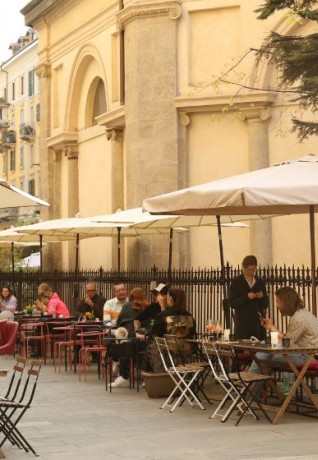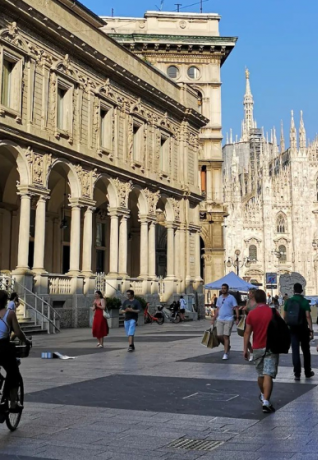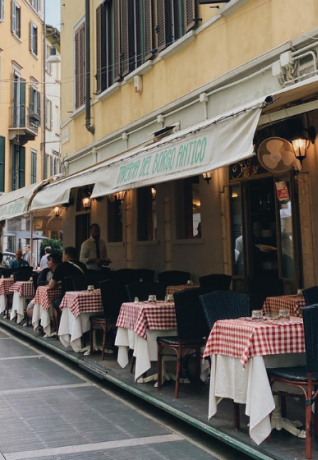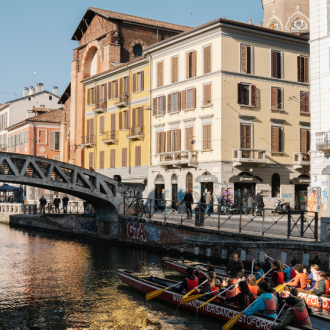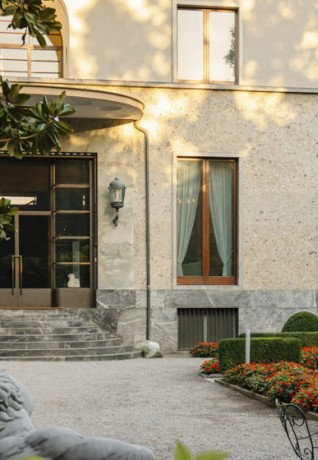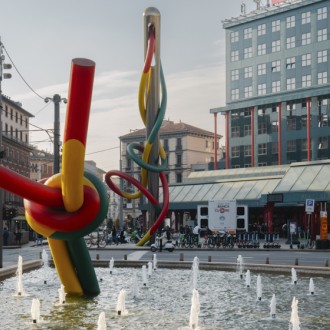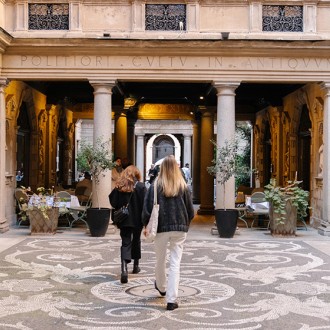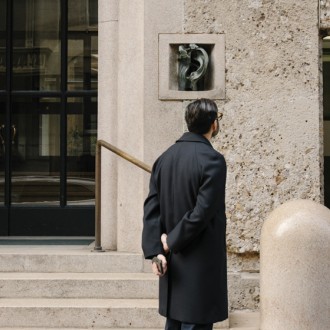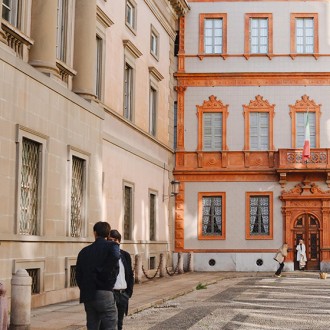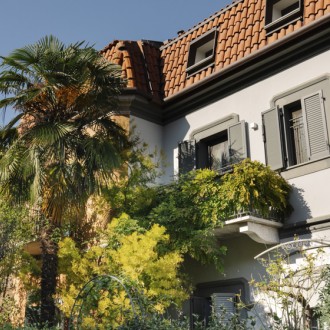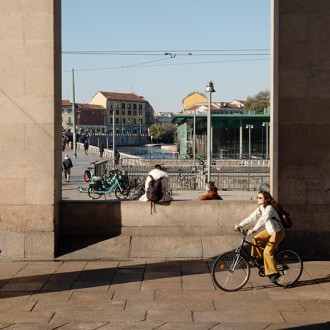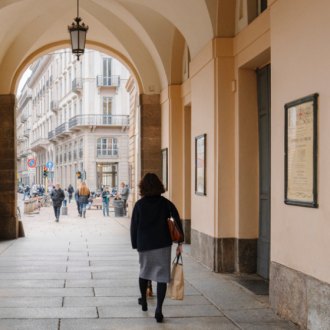MILANO’S ECONOMIC MIRACLE
Milano in the 1960s: the decade when time went faster
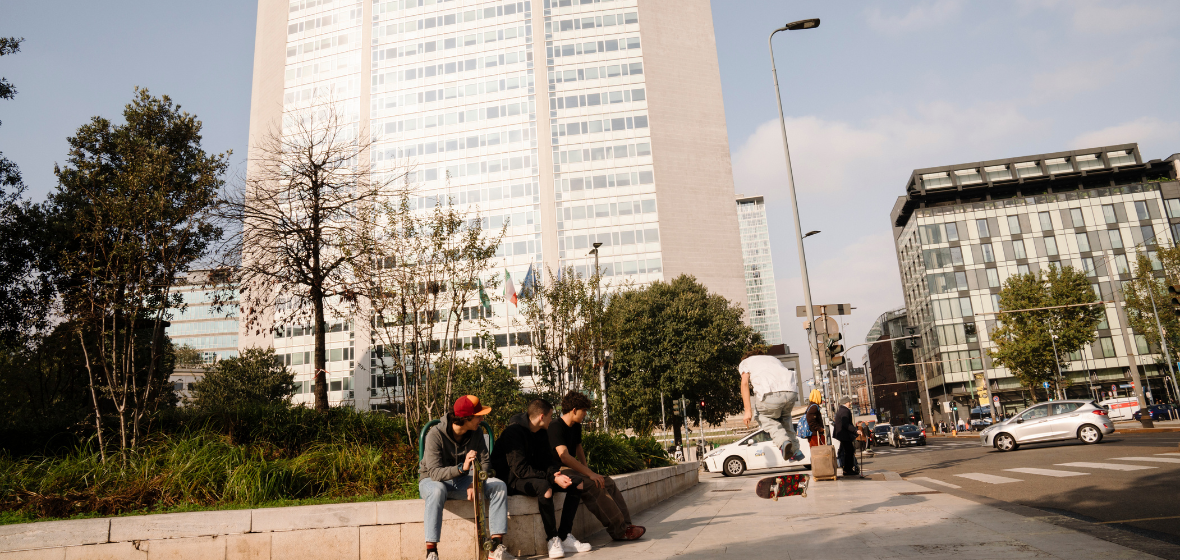
Step back in time to the 1960s, a transformative decade for Milano and the rest of Italy, marked by urban renewal, industrial innovation, economic prosperity, and a thriving cultural scene. Giuseppe Lupo’s novel “Gli anni del nostro incanto” (The years of our enchantment) depicts the life of a Milanese family through this dynamic era, weaving personal stories with the city’s emerging landmarks of the epoch that continue to shape Milano’s identity today.
Our first stop takes us to Torre Velasca, an iconic symbol of the postwar urban reconstruction. Since its completion in 1957, this distinctive 26-storey building has been a point of reference in the city. It is located in the city center near the University of Milano, where you can admire the beautiful medieval cloisters of Via Festa del Perdono.
Only the Pirellone could contend Torre Velasca’s primacy. The Pirelli skyscraper was built near the Central Station in 1960, on a project of legendary architect Gio Ponti. It proudly held the title of Italy’s tallest building for over 35 years. The innovative design and engineering behind this towering achievement are a symbol of Milano’s industrial miracle during the 1960s and the huge migratory inflows from the Mezzogiorno it set in motion (see the famous photo by Ugo Mulas of a Southern immigrant just arrived in the city set against the huge Pirellone).
The building can only be visited on special events and open days: keep an eye on our website for further information.
Our next destination is Piazza Fontana, where you can start exploring the area around Corso Vittorio Emanuele and San Babila, full of international stores and flashy boutiques, as well as the narrow streets and lanes branching from adjacent Piazza Santo Stefano, where the Chiesa di San Bernardino alle Ossa is well worth a visit: it is fascinating and morbid in equal amounts.
Piazza Fontana was the scene of the terrorist bombing of December 12, 1969, which killed 17 people and projected Milano and rest of Italy in a more turbulent era.
The tragic event thus marked the end of the economic miracle, as the novel reminds us.
We conclude our journey in the Brera Art District. Near the eponymous art museum, among refined boutiques and plush galleries, you will find Bar Jamaica, an atmospheric bar and café nestled in its charming nineteenth-century streets. The bar earned is bohemian fame during the 1960s, when it attracted artists like Lucio Fontana and Piero Manzoni, novelists like Luciano Bianciardi and Dino Buzzati, and poets like Allen Ginsberg. Much like Brera, Bar Jamaica remains a cultural hub, preserving the spirit of creativity and intellectual exchange that defined the decade.
Initiative created thanks to the resources of the Development and Cohesion Plan of the Italian Ministry of Tourism "Piano di Sviluppo e Coesione del Ministero del Turismo"

 Log in
Log in


